
Weenen
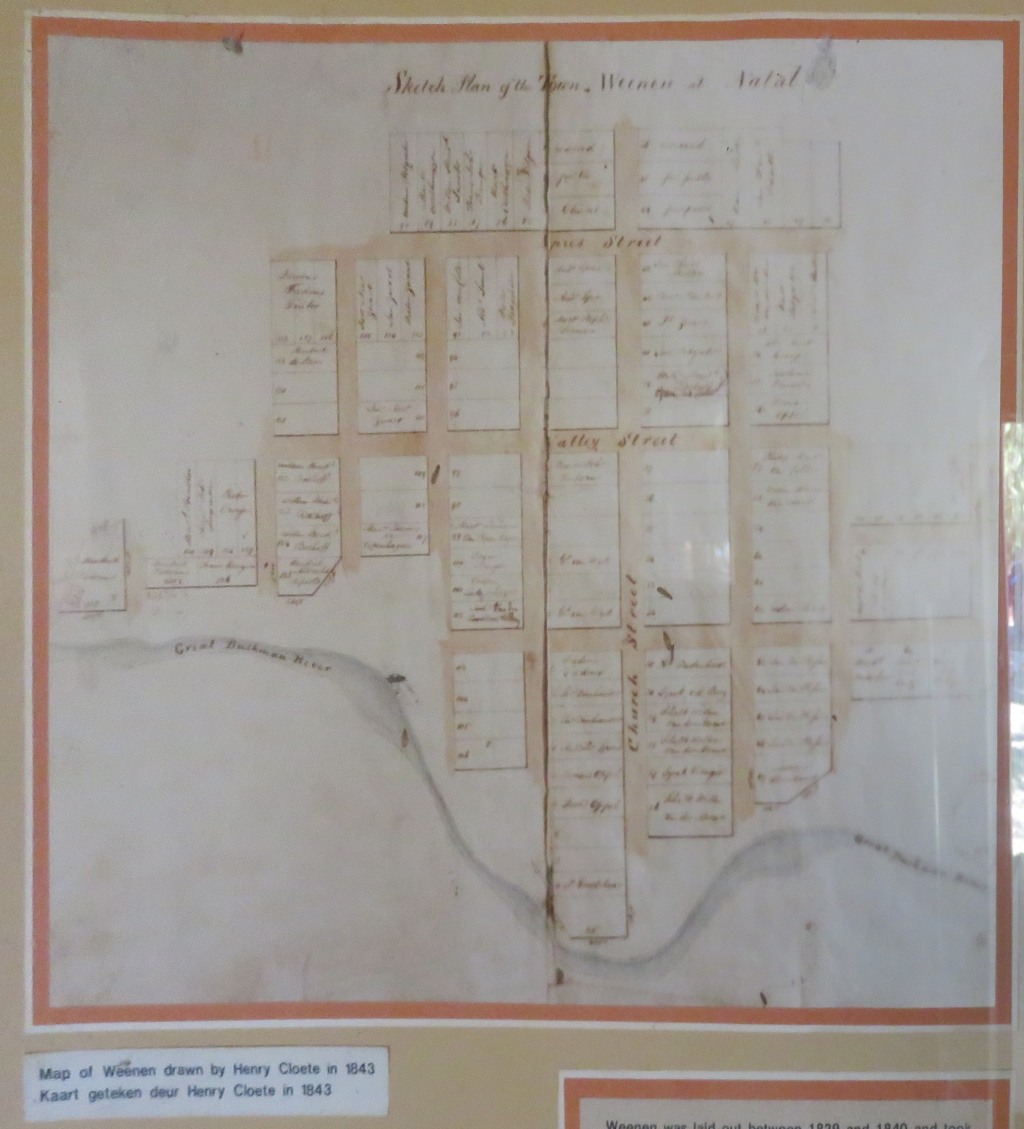 A small town in the Natal Midlands, geo position: 28.8507°S, 30.0842°E and 853m altitude. It was established as one of the first towns in Natal, the exact date is not known but believed to be around 1840. Pietermaritzburg and Port Natal
A small town in the Natal Midlands, geo position: 28.8507°S, 30.0842°E and 853m altitude. It was established as one of the first towns in Natal, the exact date is not known but believed to be around 1840. Pietermaritzburg and Port Natal 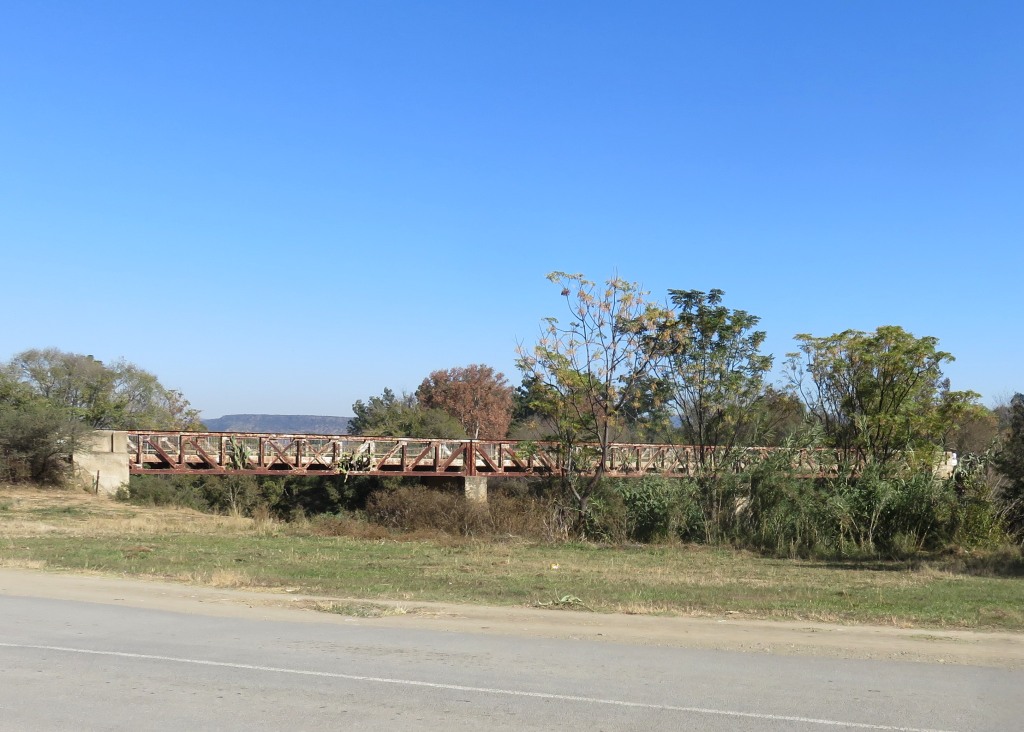 (Durban) being the other two places. There is a sketch of the layout in the museum, it is dated 1843 and drawn by Henry Cloete. Not a good picture, I have to go back and try again one day. And a question why is it in English?
(Durban) being the other two places. There is a sketch of the layout in the museum, it is dated 1843 and drawn by Henry Cloete. Not a good picture, I have to go back and try again one day. And a question why is it in English?
There was an exodus of the Dutch inhabitants not wanting to live under British rule in 1847/48. It took a few years to get the numbers up. Economically it remained depressed due to its distance from the markets. That changed with the building of a narrow gauge 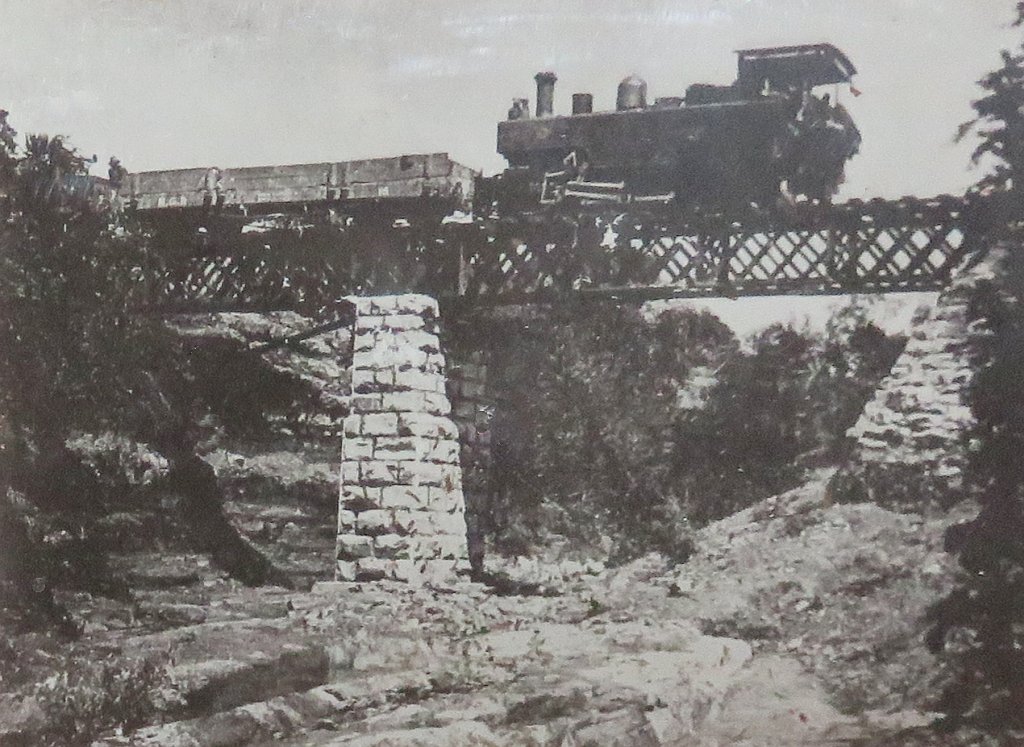 railway line, connecting the town to Estcourt and there to the mainline. That line remained active from 1907 to 1983. The picture shows the bridge into town, now used for road traffic. Interesting to note that the rail started operating even before it was finished in 1906. That was because of
railway line, connecting the town to Estcourt and there to the mainline. That line remained active from 1907 to 1983. The picture shows the bridge into town, now used for road traffic. Interesting to note that the rail started operating even before it was finished in 1906. That was because of  East Coast Fever affecting the trek oxen, reducing their numbers so much that transport was affected.
East Coast Fever affecting the trek oxen, reducing their numbers so much that transport was affected.
Witness to the improving economic fortunes of the town are reflected in some of the facades in the main street. As this one from 1910 of Abdoolgafoor Goolamsahib Arabian Merchant.
And why the name? It is Dutch for tears that were shed when about 200 of the Voortrekkers were murdered on instruction of the Zulu king Dingaan in 1838. That was the massacre of Bloukranz near the present town.
NG church
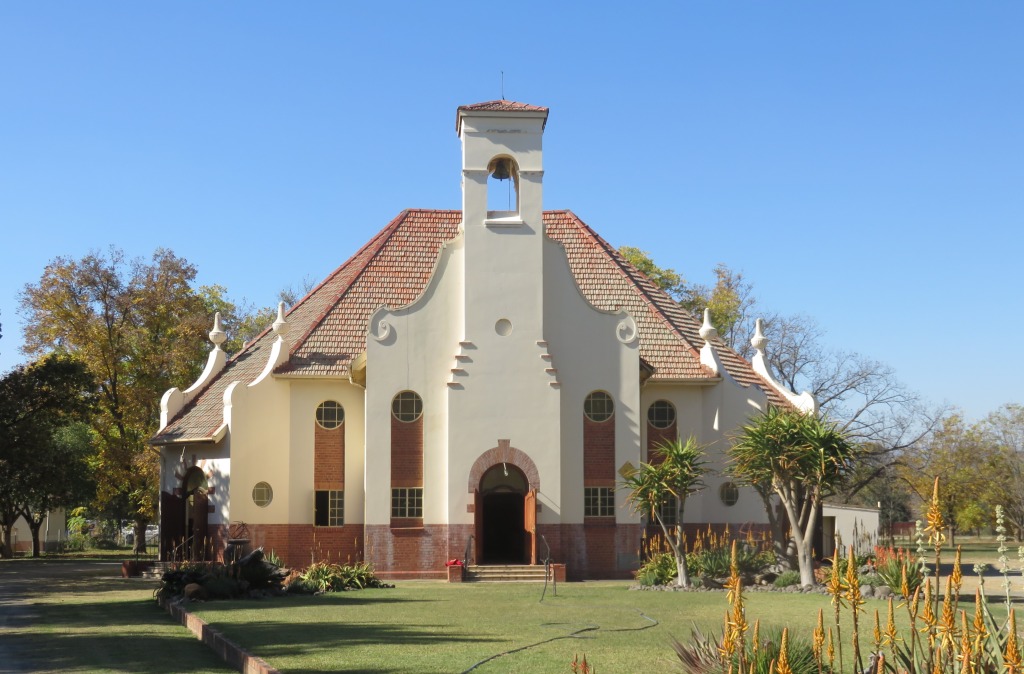
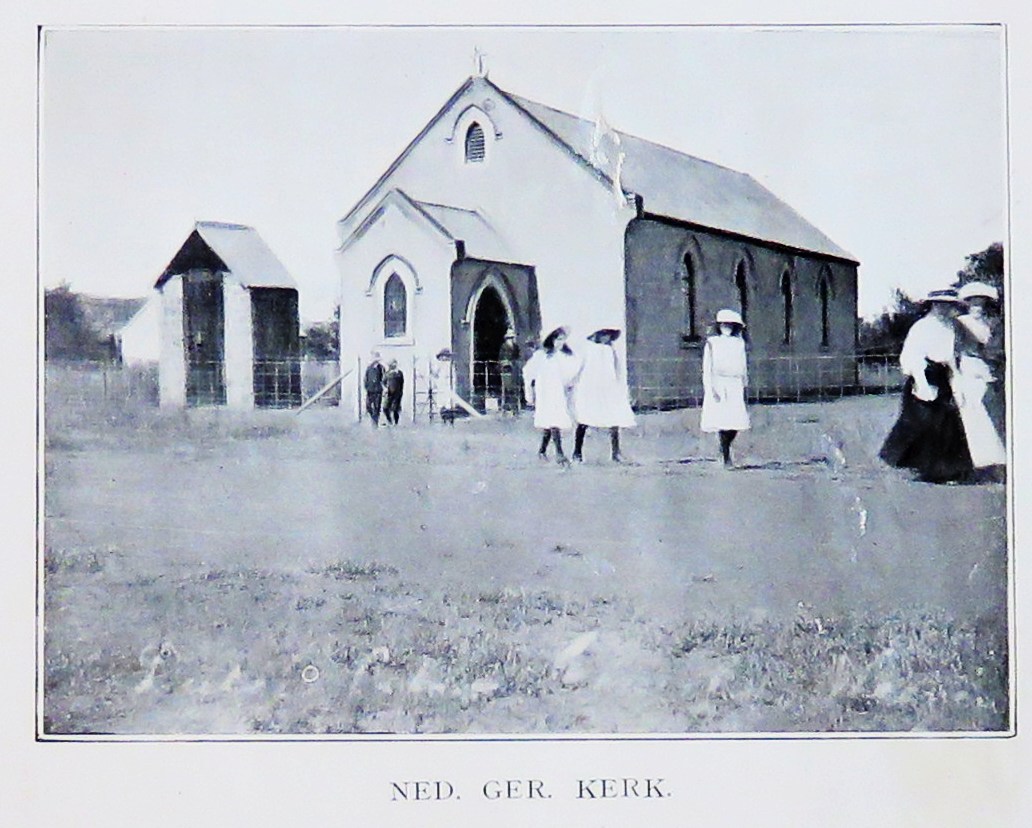 The foundation of the NG church was laid in this area. Piet Retief was moving down from the mountains into the area in anticipation of getting Dingaan's agreement to settle there. Here they set up the first church council, had their first church service, the first christening and the first holy communion.
The foundation of the NG church was laid in this area. Piet Retief was moving down from the mountains into the area in anticipation of getting Dingaan's agreement to settle there. Here they set up the first church council, had their first church service, the first christening and the first holy communion.
After that there were these terrible events of the murder of Piet Retief and his men, the killing of the woman and children at Blaukrans and mordspruit and later the annexation of Natal by the British which led to an exodus of many of the early settlers. It took a number of years to get the numbers up again.
It was only in September 1859 that a new congregation was formed, the congregation of Weenen. It was still a very large area and included places like Winterton and Colenso. It is reported that for the minister to visit the homes of members, which was expected of the minister, it could take a horse ride of up to 12 hours.
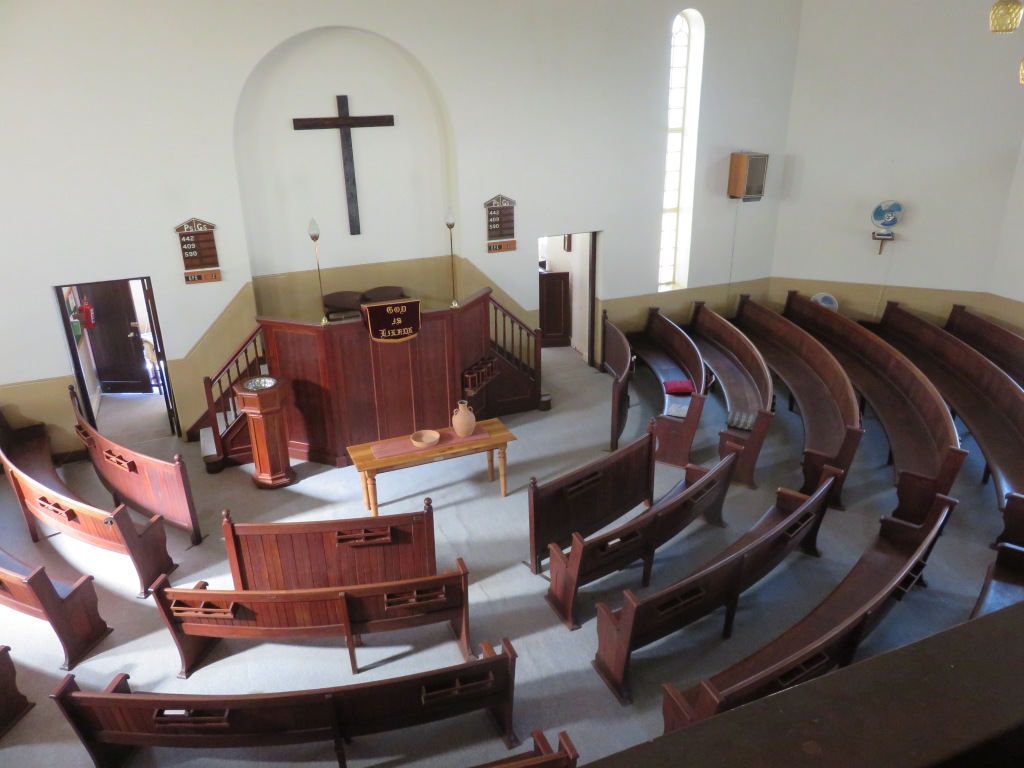 There was a shortage of qualified people to be ministers, for a long time the congregation could not find anybody to serve them. For a while they made use of the German missionaries, Güldenpfenning and Glöckner. The first appointment was that of John McCarter in 1862, one of the Scottish ministers that had been sent out to South Africa to attend to the Dutch people.
There was a shortage of qualified people to be ministers, for a long time the congregation could not find anybody to serve them. For a while they made use of the German missionaries, Güldenpfenning and Glöckner. The first appointment was that of John McCarter in 1862, one of the Scottish ministers that had been sent out to South Africa to attend to the Dutch people.
Another interesting fact is that this was a double congregation with a church each in Weenen and Winterton with services being held each Sunday in both churches. This remained so until 1949 when Winterton and Colenso seceded.
The first church building was erected in Weenen in 1859, it served until 1895, at which time a new church was built, see picture. And then finally the beautiful present church, inaugurated 1928, designed by Wynand Louw.
Museum
 The museum is opened on request, just ask at the library across the road.
The museum is opened on request, just ask at the library across the road.
Initially built as an office for the Veldkornet Andries Pretorius, who was a son of Commandant Andries Pretorius. After that it saw many uses, a court house, a church, a school, post office, residence, library and finally as a museum as from 1957.
the Voortrekker cemetery
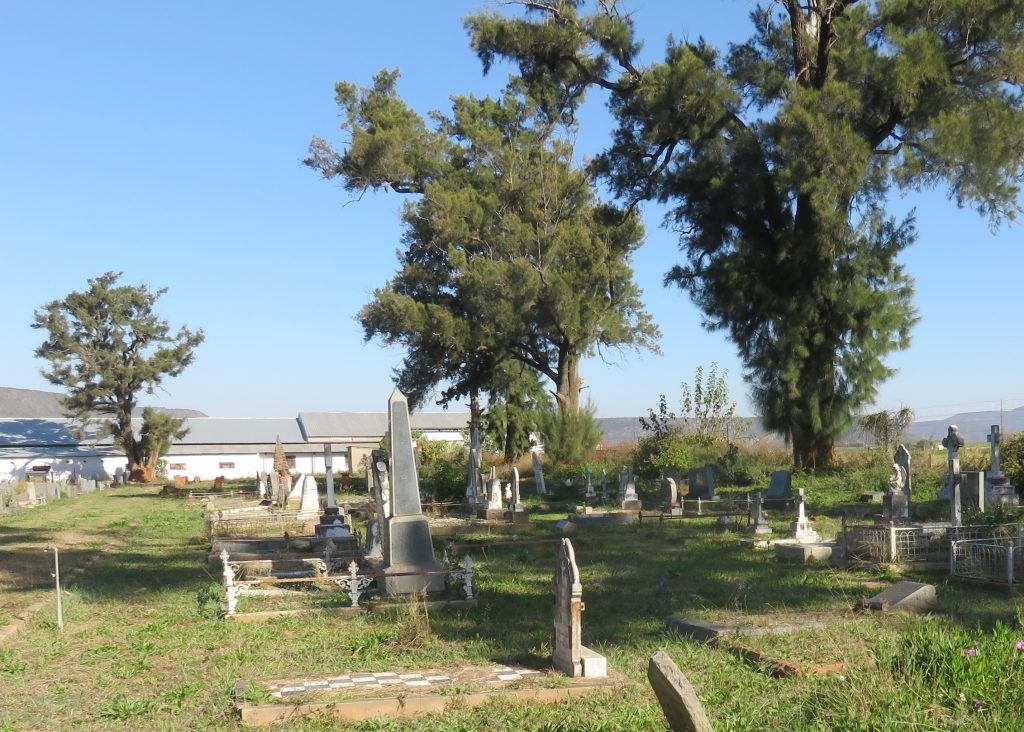
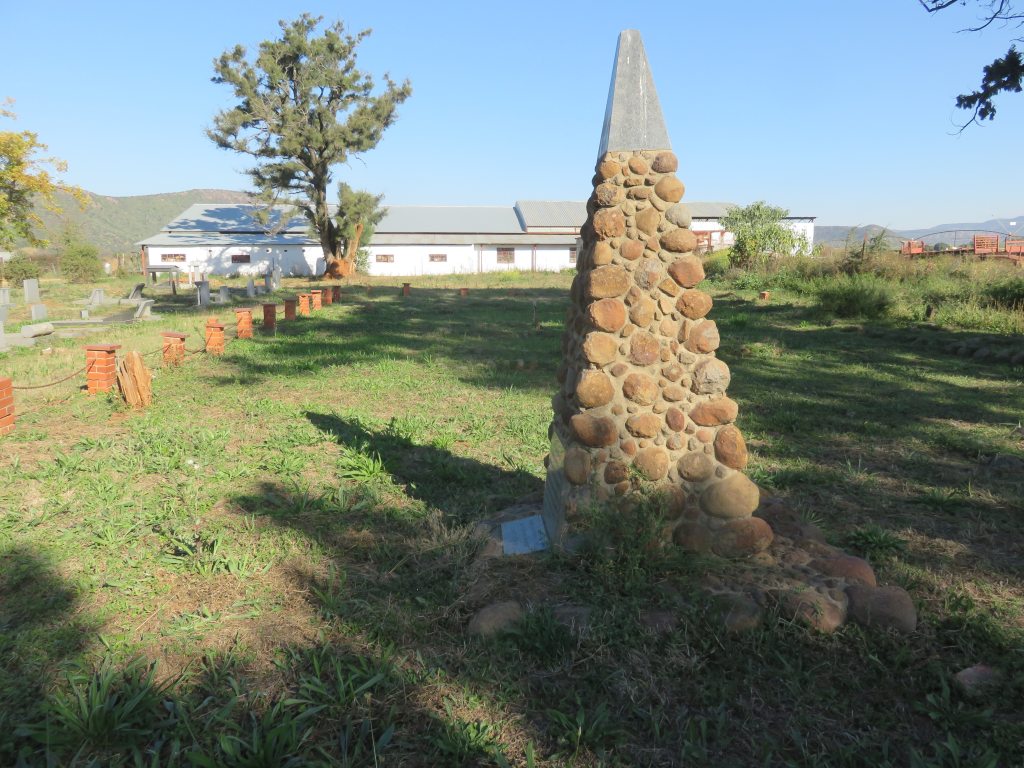 Just outside the town is the old cemetery and within it the very old cemetery. It is marked by some posts and a cairn. The plaque on the cairn informs that this was the cemetery between 1840 and 1850, there are no readable grave stones.
Just outside the town is the old cemetery and within it the very old cemetery. It is marked by some posts and a cairn. The plaque on the cairn informs that this was the cemetery between 1840 and 1850, there are no readable grave stones.
References
Ref 1.: Standard Encyclopaedia of Southern Africa, Nasou Limited
Ref 2.: "Ons Kerk Album van Hollandsche Kerken en Leeraren", publisher: unknown, printed in the 1920's